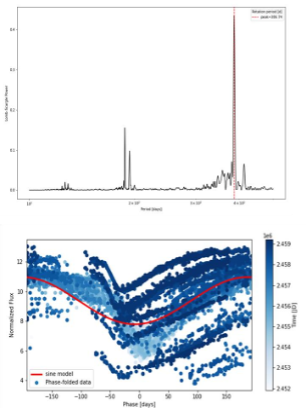VOLUME 18 (Supplement)

SciEnggJ 18 (Supplement) 196-201
available online: 26 June 2025
DOI: https://doi.org/10.54645/202518SupRMV-19
*Corresponding author
Email Address: pbtucio@rtu.edu.ph
Date received: 28 May 2024
Date revised: 06 June 2025
Date accepted: 15 June 2025
ARTICLE
Orbital evolution of R Aquarii
University, Mandaluyong City, Philippines
2Center for Astronomy Research and Development,
Rizal Technological University, Mandaluyong City,
Philippines, 1550
3Department of Science and Technology – Philippine Nuclear
Research Institute (DOST-PNRI), Commonwealth Ave, Diliman,
Quezon City, Philippines,1101
4Department of Physics, School of Science, Xi’an Jiatong-Liverpool
University, Xian Ning West Road No. 28 , Xi'an, China
The orbital evolution of R Aquarii was analyzed and investigated using archival photometric data from the American Association of Variable Star Observers (AAVSO). The selected photometric data from 1840 to 2021 to determine the evolution of R Aquarii in a period of 181 years. The use of the Lomb-Scargle periodogram to derive the physical parameters, periodicity, and phase-folding of the R Aquarii star. The N-body simulations, such as Rebound and ReboundX, were used to determine the orbital parameters of the star. The parameters generated from Lomb-Scargle, Rebound, and ReboundX were then simulated using the Modules for Experiments in Stellar Astrophysics (MESA). MESA was also used to determine the mass loss rate of R Aquarii. The decrease in the orbital parameters such as semi- major axis and eccentricity suggests that the orbital period gets smaller as the rotation of the binary gets faster. In addition, the evolutionary path of the binary for the semi-major axis and eccentricity coincides with the binary's mass transfer rate. After the simulation, the mass of the long-period variable is 0.9Mʘ while the mass of the companion star is 0.63Mʘ as calculated and derived using MESA. The result is consistent with the calculated 44-year period for a binary system.
© 2025 SciEnggJ
Philippine-American Academy of Science and Engineering